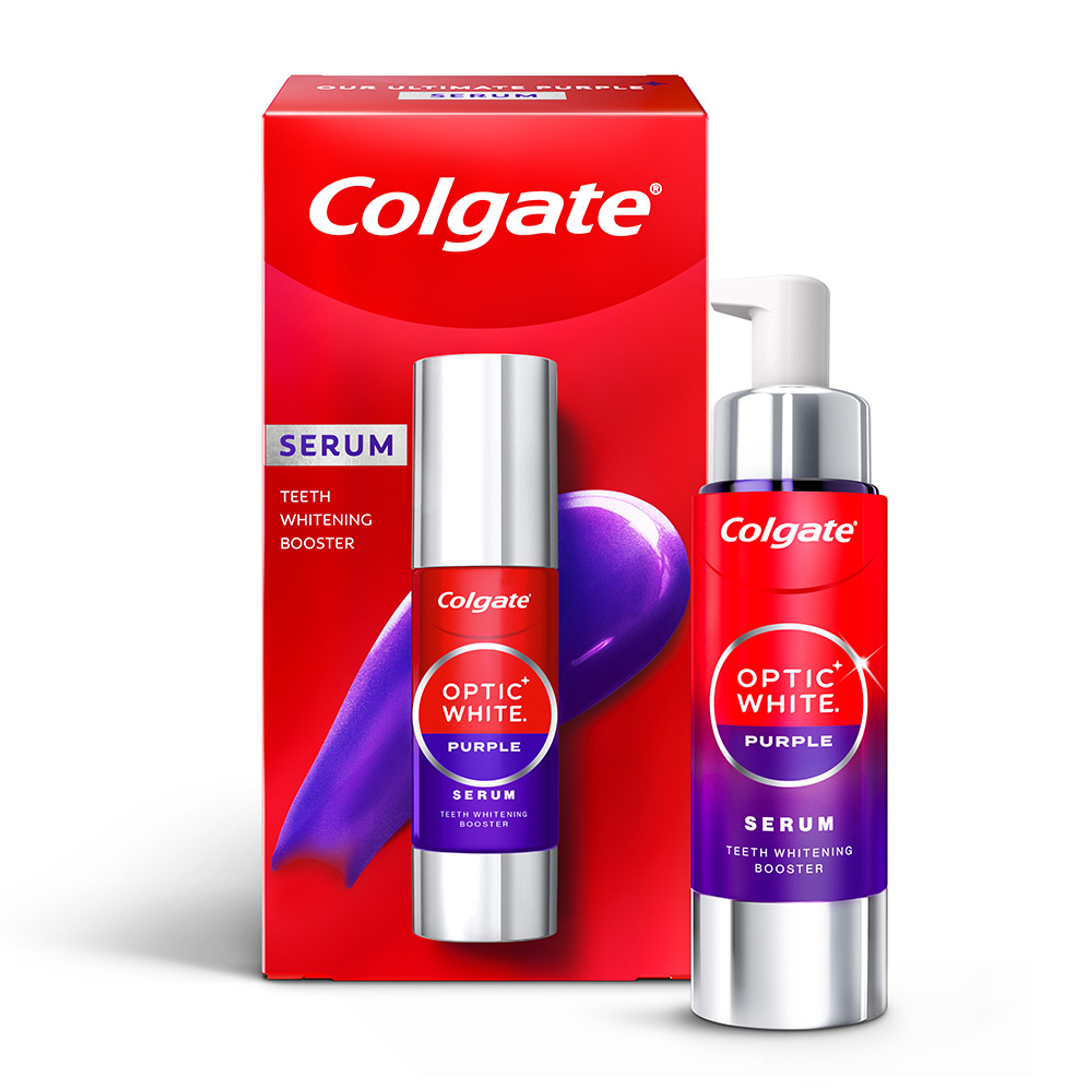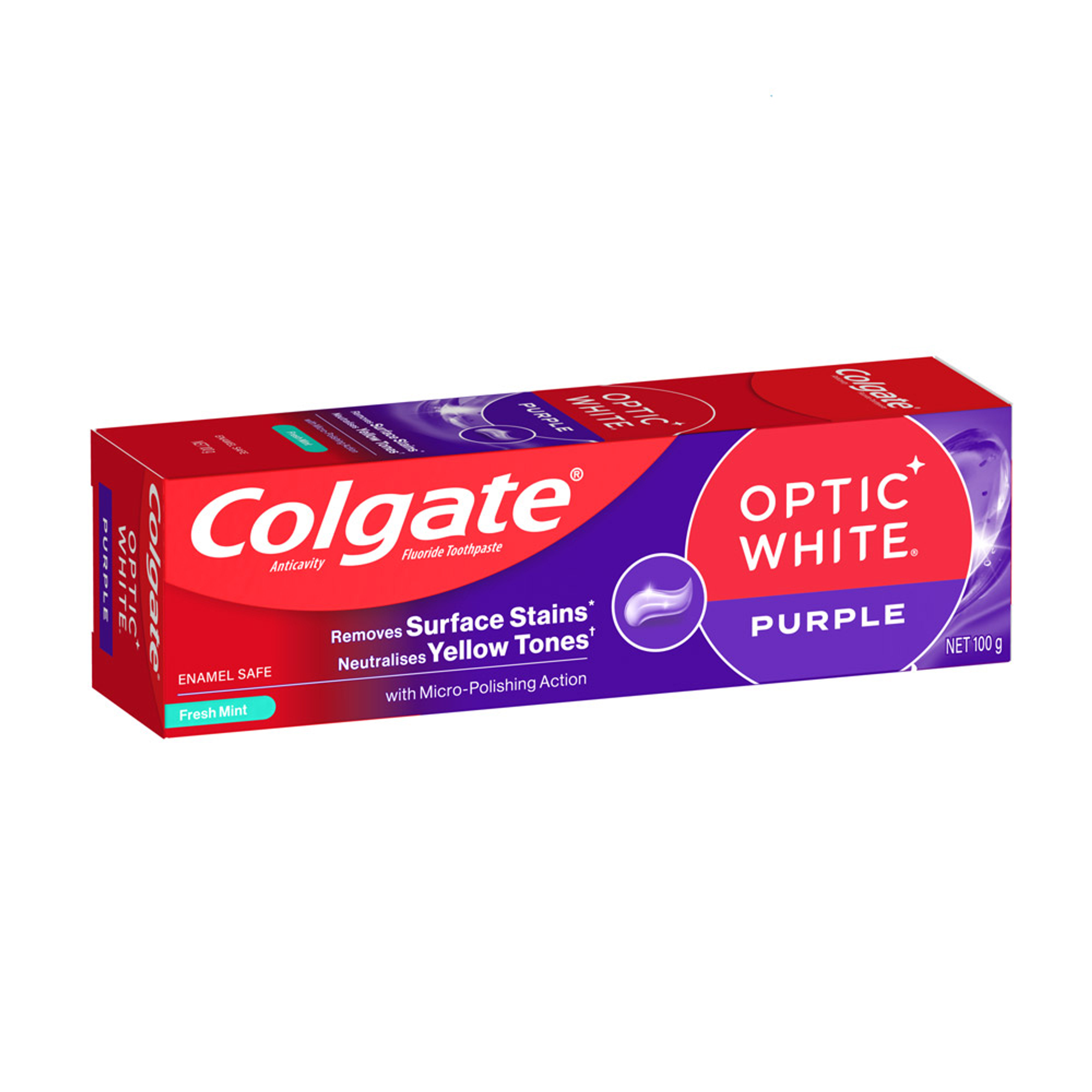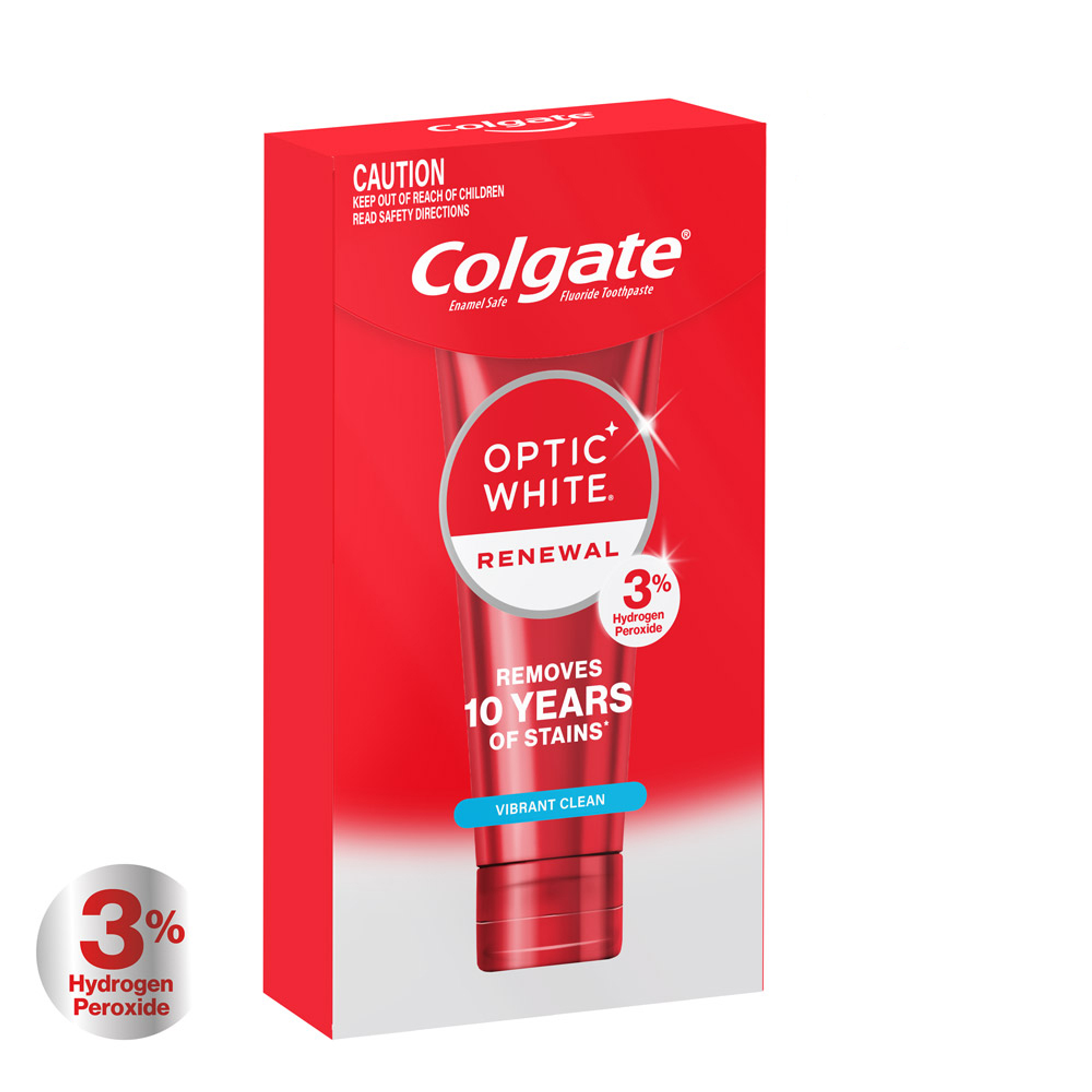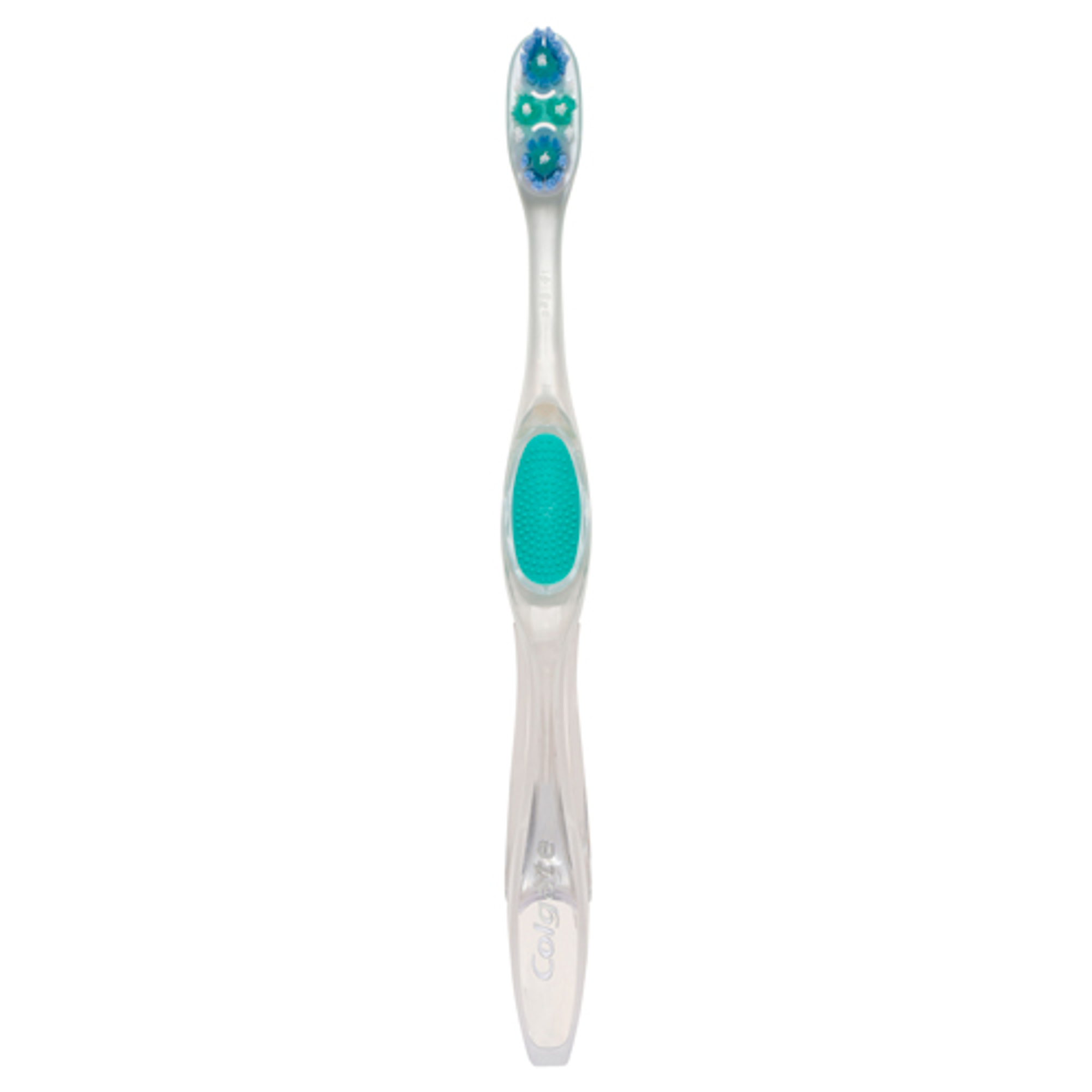Different Types of Teeth Whitening Products
Achieving a brighter smile has now become easier with the variety of at-home teeth whitening products within easy reach that suit different needs, lifestyles, and budgets. From everyday whitening solutions like toothpaste and mouthwash to advanced options like LED whitening kits, there is something for everyone. Below is a closer look at some of the most popular teeth whitening products.
Teeth Whitening Toothpaste
If teeth whitening is your ultimate goal in daily oral care, using a whitening toothpaste is an easy and affordable way to achieve it. These toothpastes are specially made to remove surface stains from food, drinks, or everyday habits. Unlike regular toothpaste, they often contain mild abrasives or whitening agents like hydrogen peroxide for effective whitening.
For instance, the Colgate Optic White Pro Series Vividly Fresh Teeth Whitening Toothpaste is a great choice. It contains 5% hydrogen peroxide—the highest level available in a whitening toothpaste and the same amount dentists use. It is enamel-safe and whitens deeply, removing 15 years of yellow stains* from your smile. Using whitening toothpaste as part of your daily oral care routine is an excellent way to maintain a bright smile while keeping your teeth strong and healthy. Not only does it tackle stains, but it also provides fluoride protection, helping to maintain overall oral health.
Whitening Mouthwashes And Rinses
Whitening mouthwashes and rinses are a clear and convenient addition to your daily oral care routine. These products not only freshen your breath but also help remove surface stains over time. They are formulated with bleaching agents, such as hydrogen peroxide, which work to brighten your teeth while breaking down the pigments responsible for tooth staining.
Although whitening mouthwashes may not deliver dramatic results as quickly as other products like strips or dental whitening kits, they are an excellent option for maintaining a bright smile and preventing new stains. They work best when combined with other whitening methods, such as toothpaste or strips, as part of a consistent oral hygiene routine.
Teeth Whitening Chewing Gums
Teeth whitening chewing gums are a simple and portable way to maintain a bright smile. These gums contain whitening ingredients that reduce surface stains while promoting saliva production. Saliva is known for naturally cleaning the mouth and removing food particles that cause discolouration.
Chewing whitening gum after meals helps wash away debris and keeps your teeth fresh on the go. It is also a great way to maintain the results of other whitening treatments, making it a practical option for busy lifestyles.
Whitening Strips
Teeth whitening strips are one of the most popular options for achieving pearly white teeth. These are thin strips coated with a whitening gel that typically contains hydrogen peroxide or similar whitening agents. The active ingredient in the strip gently bleaches the teeth to offer a bright smile. If you are in Australia or anywhere globally, this is a popular and widely available option.
They are designed to match the shape of your teeth, and as a result, they allow for even coverage and targeted whitening. Teeth whitening strips are thus a perfect choice for an at-home whitening experience to brighten your teeth without the need for professional treatments. If you are looking for a quick and effective way to enhance your smile, whitening strips are a reliable choice for achieving a dazzling white smile from the comfort of your home.
Teeth Whitening Trays With Gels
Teeth whitening trays with gels often offer a customisable and effective way to achieve whiter teeth. They consist of a tray designed to fit over your teeth and filled with a whitening gel. The gel works by breaking down stains on the surface and deeper layers of your teeth. There are two main types of whitening trays, which include custom-fitted and pre-fitted trays.
Custom-fitted trays are made specifically for your teeth by a dental professional. It ensures better contact and more even whitening. On the other hand, pre-fitted trays are ready-made and can be purchased over the counter. While less precise than custom trays, they are still effective for many users.
Indigo LED Teeth Whitening
Indigo LED teeth whitening kit is known to offer professional-level whitening results from the comfort of your home. This method combines the power of whitening gels with advanced light technology to enhance the whitening process. The indigo LED light works by accelerating the breakdown of the whitening agents, such as hydrogen peroxide, allowing them to penetrate deeper and remove stubborn stains.
One notable product in this category is the Colgate Optic White FlexLight LED Teeth Whitening Kit. This clinically proven device is enamel-safe, does not cause tooth sensitivity, and features a lightweight, flexible LED device that moulds to your mouth. It is known for delivering dramatic whitening results in just 10 minutes a day**. The kit also features a USB cable for convenient and efficient recharging, making it a practical addition to your oral care routine.
Teeth Whitening Pens
Teeth whitening pens are a quick and convenient way to brighten your smile on the go. These portable pens are simple and easy to use, allowing you to target specific teeth or areas with ease. They typically contain a serum or gel that includes active ingredients like hydrogen peroxide, which works to break down surface stains and whiten your teeth to improve appearance.
A great option is the Colgate Optic White Overnight Teeth Whitening Treatment Pen. It delivers noticeable results while you sleep, whitening teeth up to 3 shades whiter in 2 weeks***. The teeth whitening pen is an easy-to-use solution for busy individuals looking to whiten their teeth. Apply Colgate Optic White Teeth Whitening Serum to clean teeth after your night oral care routine. Once applied, the serum forms a concentrated hydrogen peroxide film that works overnight, revealing a brighter, whiter smile in the morning. Simply brush to remove the film and get whiter teeth.
How to Choose The Right Teeth Whitening Product?
In the oral care routine, selecting the best teeth whitening products is an important aspect. The product should depend on your specific needs and preferences. Here are some of the factors to consider when choosing the right teeth whitening products:
Level of Staining: If you have mild surface stains, whitening toothpastes or chewing gum might be sufficient. For deeper stains, consider strips, pens, or trays with teeth whitening gels.
Sensitivity: If you experience tooth sensitivity, opt for products labelled as enamel-safe or specifically made for sensitive teeth, such as LED whitening kits or products with gentle whitening formulas.
Convenience: If a busy lifestyle is a major factor to consider, go for portable options like whitening pens or chewing gum, which are ideal for quick touch-ups on the go.
Budget: Teeth whitening products vary widely in price. Toothpaste and mouthwash are cost-effective and are available at regular prices. However, LED kits and custom trays are pricier but may offer professional-level results.
Time Commitment: Consider how much time you can dedicate to whitening. Products like pens and strips require minimal time, while trays and LED devices might need longer sessions for noticeable results.
Achieving a bright, white smile has never been easier, thanks to the variety of teeth whitening products available. Whether you love the simplicity of toothpaste, the professional touch of home teeth whitening kits, or LED kits, there is a solution to fit every need and lifestyle. By considering factors like staining, sensitivity, convenience, and budget, you can choose the product that works best for you. However, if you require extensive whitening treatment, consulting a dental professional for a personalised experience can be helpful.
*with brushing twice daily for 2 weeks. Individual results may vary.
**10 minutes a day for 10 days. Use as directed. Individual results may vary.
***Starts working from day 1. Individual results may vary.
Frequently Asked Questions
Are teeth whitening products safe for daily use?
While using teeth whitening products may take longer to see results than professional whitening, they are more affordable and safe to use for a longer period of time.
How do teeth whitening products work?
Teeth whitening products work by either removing surface stains or lightening deeper stains within the enamel of your teeth.
How long does it take to see results from teeth whitening products?
The time it takes to see results from teeth whitening products depends on the type of product and the severity of the discolouration.
Do teeth whitening products work on all types of stains?
There are different types of teeth stains, including extrinsic stains and intrinsic stains. Extrinsic stains can often be treated with teeth whitening products. However, intrinsic stains may require a professional whitening treatment.
This article is intended to promote understanding of and knowledge about general oral health topics. It is not intended to be a substitute for professional advice, diagnosis or treatment. Always seek the advice of your dentist or other qualified healthcare provider with any questions you may have regarding a medical condition or treatment.













